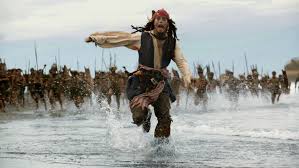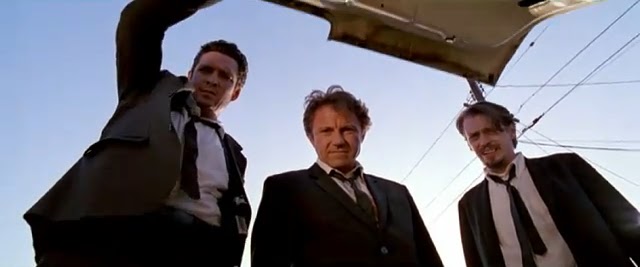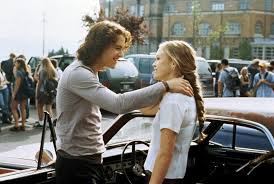Genre
A film genre is a motion picture category based on similarities in either the narrative elements or the emotional response to the film (namely, serious, comic, etc.). Most theories of film genre are borrowed from literary genre criticism.
Conventions of film genres are the normal features in a film you would see of a certain genre.
Horror films
The conventions of horror films are...
The conventions of horror films are...
- Either a dark isolated setting eg forest/abandoned building. OR. a city environment to make the story seem realistic.
- Disturbing low pitch sounds to create tension and suspense.
- Dark colours/filters (blood red).
- Death/ supernatural/ dark plots.
- Fast pace editing to create suspense.
- A vulnerable character and a brave character.
- Contrapuntal music
For example...
This film opening has a vulnerable character, a supernatural plot, contrapuntal music, disturbing soundtrack to build up tension and dark colours used throughout. All of these create an atmosphere, you wouldn't think a teen comedy would start with bright colours.
Horror films are usually aimed at younger audiences, aged 15-20. Horror films excite a younger audience and give them a thrill, younger audiences are less likely to be put off by horror films and scenes of violence which would make older audiences feel negatively towards the film.
Science Fiction
The conventions of science fiction films are...
This film opening features the scientific elements and technology of time travel its also partly set in the future, in the fact that Marty was sent to the future and comes back from the future.
Newly releasing science fiction are usually aimed at younger audiences, aged 15-20. However as franchises grow older and release sequels the same audience carries through with the film, meaning the audience is a much older more mature audience as well as younger audiences who have been shown the films by parents or older family members.
Comedy
Conventions of comedy films are..
This intro features a main character that could be considered a bit of an idiot but hes not a normal person, he is a policeman fighting crime. He is also arguably accident prone since he gets stabbed, therefore most of these fits the conventions of the genre.
The target audience of a comedy film is very dependant on the content of the film. For example children’s films labelled as PG’s or U’s can have comical scenes, however the audience would be completely different for a comedy film labelled as a 12 or a 15, Comedies labelled 18 certificate are often more explicit in terms of language and scenes, making the film heavily aimed at the over 18s.
Romance...
Conventions of the romance genre are...
This film opening features soft tender lighting and the colour red which is the colour most people think of when they think of romance. This opening doesn't exactly fit the other conventions but that shows how even some of the biggest hits in cinema do not abide by the conventions.
Target audiences for romance films usually tends to be more for women than men. After asking some people questions about why people think women are more likely to like romance films, they said women are the main target audience because they feel the films are relatable and men get dragged along to watch the films.
Teen...
Conventions of teen films are...
In this film opening of the teen film, perks of being a wall flower, it confides to the conventions of the genre. It features a young adult, who in this specific scene seems quite alienated. Not many teens spend time alone in their rooms in films, they're out partying. We can't tell from the opening but the film goes on to deal with coming of age and first love for example.
Teen film is a film genre targeted at teenagers and young adults, For legal reasons, many teenage characters are portrayed by young adults. Some teen films appeal to young males while others appeal to young females.
Action...
Action film conventions are..
This film does not abide by the most of the conventions of action films, it sets the scene in mexico and as he enters the hotel room and locks the door, changes and disappears out the window we know he is the hero.
Action films are one of, if not the most popular film genre. Both the mass and niche audiences watch action film. So a lot of different types of people are watching. But there is a core target audience who will and would want to watch any action films that are released. This is typically a young adult male, with an interest in action, thrills and excitement.
Crime genres..
Conventions of crime films are..
This film opening again does not specifically fit the conventions of the genre, it has the antagonist and features the illegal game which in the film is the protagonist but that is the only few conventions of the genre it meets in the opening sequence.
The target audience for a crime thriller would be predominantly males. This is because a crime thriller is known to interest them more. Crime-thrillers are often age rating 15. This is because it
allows the creators of the film to include a vast amount of strong violence, sex scenes and sex references and strong violence. All these are present crime thrillers with a 15 certificate. However are present to an extent which enables the film to be enjoyed by people age 15 and above.
The conventions of science fiction films are...
- Scientific elements
- technology
- set in the future
- Futuristic props, costume and setting
- Conflict between good and evil
- time-travel
This film opening features the scientific elements and technology of time travel its also partly set in the future, in the fact that Marty was sent to the future and comes back from the future.
Newly releasing science fiction are usually aimed at younger audiences, aged 15-20. However as franchises grow older and release sequels the same audience carries through with the film, meaning the audience is a much older more mature audience as well as younger audiences who have been shown the films by parents or older family members.
Comedy
Conventions of comedy films are..
- Idiots who are accident prone (Charlie from Always Sunny in Philadelphia)
- Smart people who are socially awkward (Sheldon from The Big Bang Theory
- 'Regular people' (Dennis from Always Sunny in Philadelphia)
- Love and sex ( Superbad)
- Alcohol and Drugs (How High)
- work and school (Office Space)
- Music (School of Rock)
- Crime (The Green Hornet)
- Most comedies have a nice and happy outcome
- There are many locations that are featured in comedy films.
This intro features a main character that could be considered a bit of an idiot but hes not a normal person, he is a policeman fighting crime. He is also arguably accident prone since he gets stabbed, therefore most of these fits the conventions of the genre.
The target audience of a comedy film is very dependant on the content of the film. For example children’s films labelled as PG’s or U’s can have comical scenes, however the audience would be completely different for a comedy film labelled as a 12 or a 15, Comedies labelled 18 certificate are often more explicit in terms of language and scenes, making the film heavily aimed at the over 18s.
Romance...
Conventions of the romance genre are...
- soft lighting effects and relatively natural lighting to achieve the feeling of it being in touch with reality making the story as believable as possible.
- soft tender music, this is to represent the tenderness and sensitivity of the relationship and often represent the characters personality.
- Flowers and gifts that will be given to one of the main characters usually by the love interest.
- A male and Female, the male is virtually always the love interest and the selling point of the film
- Most of the time there will be some sort of character that disrupts the relationship created between the two main characters
- mostly set in the city, especially big cities for example New York being perhaps the most common setting for Romance films,
This film opening features soft tender lighting and the colour red which is the colour most people think of when they think of romance. This opening doesn't exactly fit the other conventions but that shows how even some of the biggest hits in cinema do not abide by the conventions.
Target audiences for romance films usually tends to be more for women than men. After asking some people questions about why people think women are more likely to like romance films, they said women are the main target audience because they feel the films are relatable and men get dragged along to watch the films.
Teen...
Conventions of teen films are...
- The plot is usually based upon the special interests of teenagers
- coming of age
- first love
- rebellion
- conflict with parents
- teen angst or alienation
- Films in this genre are often set in high schools
- contain characters that are of high school age
- Sexual themes are also common, as are crude forms of humor.
In this film opening of the teen film, perks of being a wall flower, it confides to the conventions of the genre. It features a young adult, who in this specific scene seems quite alienated. Not many teens spend time alone in their rooms in films, they're out partying. We can't tell from the opening but the film goes on to deal with coming of age and first love for example.
Teen film is a film genre targeted at teenagers and young adults, For legal reasons, many teenage characters are portrayed by young adults. Some teen films appeal to young males while others appeal to young females.
Action...
Action film conventions are..
- Physical action takes precedence in the storytelling
- Continuous motion and action
- Physical stunts, chases, fights, battles, and races.
- The story usually revolves around a hero that has a goal, but is facing incredible odds to obtain it.
This film does not abide by the most of the conventions of action films, it sets the scene in mexico and as he enters the hotel room and locks the door, changes and disappears out the window we know he is the hero.
Action films are one of, if not the most popular film genre. Both the mass and niche audiences watch action film. So a lot of different types of people are watching. But there is a core target audience who will and would want to watch any action films that are released. This is typically a young adult male, with an interest in action, thrills and excitement.
Crime genres..
Conventions of crime films are..
- Suspicion
- Enigmas
- Extraordinary events
- Drama
- Fast pace
- crime of some sort
- cliffhanger
- antagonist in danger
- complex narrative
This film opening again does not specifically fit the conventions of the genre, it has the antagonist and features the illegal game which in the film is the protagonist but that is the only few conventions of the genre it meets in the opening sequence.
The target audience for a crime thriller would be predominantly males. This is because a crime thriller is known to interest them more. Crime-thrillers are often age rating 15. This is because it
allows the creators of the film to include a vast amount of strong violence, sex scenes and sex references and strong violence. All these are present crime thrillers with a 15 certificate. However are present to an extent which enables the film to be enjoyed by people age 15 and above.
What do film companies do to attract these audiences in terms of marketing?
Film companies can attract their audiences in a variet of ways; the most significant is probably the name of the film itself. If the name does not appeal to the target audience, they are not likely to watch the film therefore it must be catered correctly to the interests of the people who are most likely to watch the fiulm. For example, ' Angus, Thongs and perfect snogging' is going to interest a completley different audience to 'Die hard'.
Another way of marketing a film is its trailer, which usually include the best parts of the film that are likely to intrigue an audience whilst still not giving too much away. Film companies can also post these trailers on socail medias like youtube and facebook to market their film further, as it will be accessible to a larger amount of people.
ML





